Everybody wants to be able to type faster so they can be more efficient and impress their peers. The question is, will buying a mechanical keyboard improve your typing speed?
Using a mechanical keyboard instead of a normal keyboard can improve typing speed by allowing you to customize the feel and sound of your keyboard. The tactile and audio feedback from a mechanical keyboard can help improve typing speeds and let you know the keystrokes are registering.
While mechanical keyboards can offer improvements in typing speed, the biggest factor will always be practice, practice, practice.
You can read about our favorite mechanical keyboard for typing here.
Does a Mechanical Keyboard Make You Type Faster?
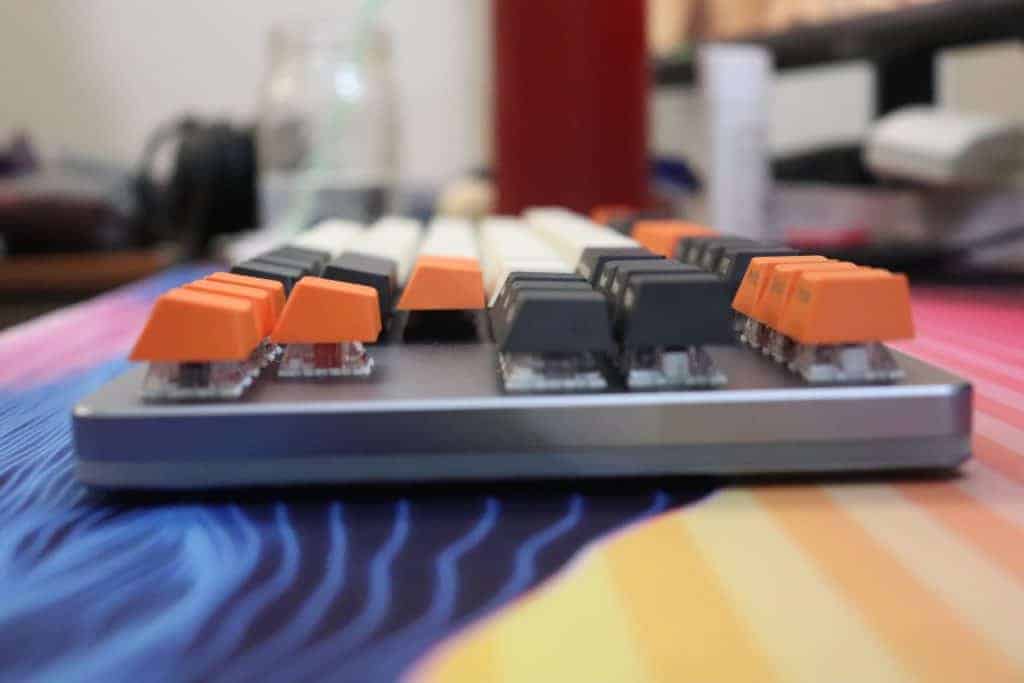
Although there is no definitive proof that a mechanical keyboard will always make you type faster, the extra benefits you get from using a mechanical keyboard can help give your typing speed an edge over a standard keyboard.
Mechanical keyboards allow for the ultimate customization and allow you to pick the perfect keycaps, switches, and keyboard height to optimize your typing experience. In addition, they allow you to type more consistently and help to avoid errors.
We’ll go over some of the different options and explain how it can improve your typing speed. We also have another in-depth article about the five reasons why mechanical keyboards are better for typing.
Difference Between a Mechanical and Membrane Keyboard
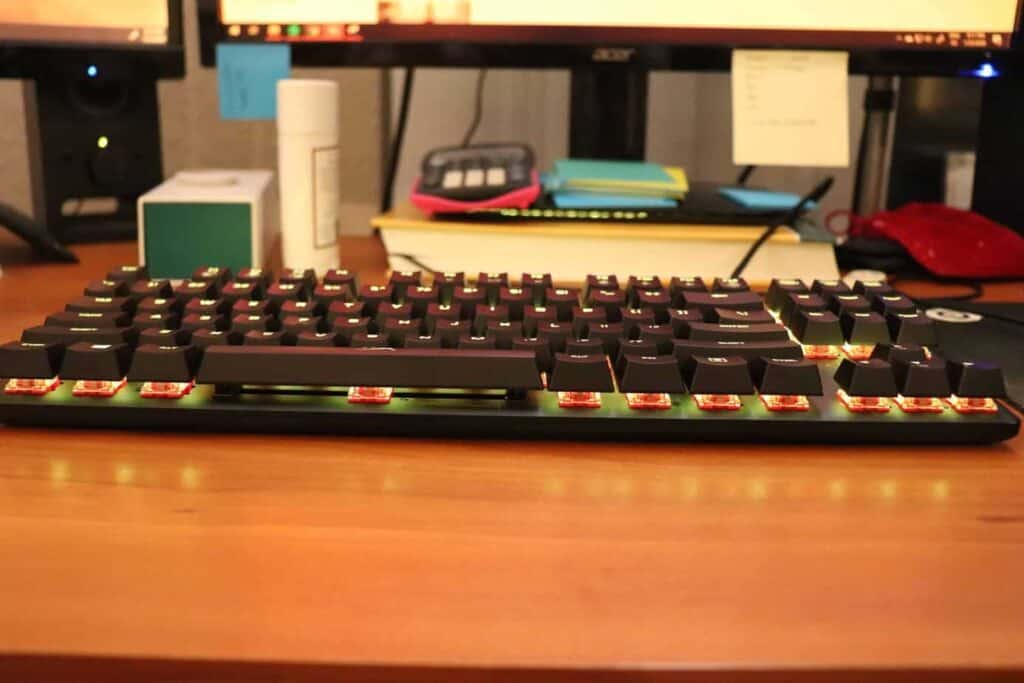
There are some pretty big differences between a normal rubber-dome/membrane keyboard and a mechanical one. A mechanical keyboard has an individual switch under each key that actuates independently of the surrounding keys.
A membrane/rubber-dome keyboard has a membrane surface that rests on top and creates a mushy feel that is tied to all of the surrounding keys. This can lead to an inconsistent feeling keystroke and more errors when typing.
For this reason, the switch design of a mechanical keyboard is much better for typing than a normal keyboard.
Long-Lasting Durability
An added bonus of mechanical keyboards is they last forever, the switches on a mechanical keyboard are rated for 100 million keystrokes, which means you would need to press a key 100 million times before it shows any signs of breaking, pretty crazy right?
Mechanical keyboards are also pretty easy to fix. All you need to do is swap out one of the switches and you’re good to go.
N-Key Rollover
Another added benefit of mechanical keyboards is a feature called N-key rollover, which decreases the chance of a key not registering. Have you ever been typing super-fast and realized your keystroke didn’t enter? Trust us, it’s your keyboard, not you.
On your keyboard, try pressing multiple keys at the same time. Do they all register? If not, then you don’t have N-key rollover and most likely need a new keyboard.
N-key rollover lets you to multiple keys at once and have them all register. Perfect for those who type fast and have issues where their keyboard can’t keep up.
Customizable Switches for Comfortable Typing
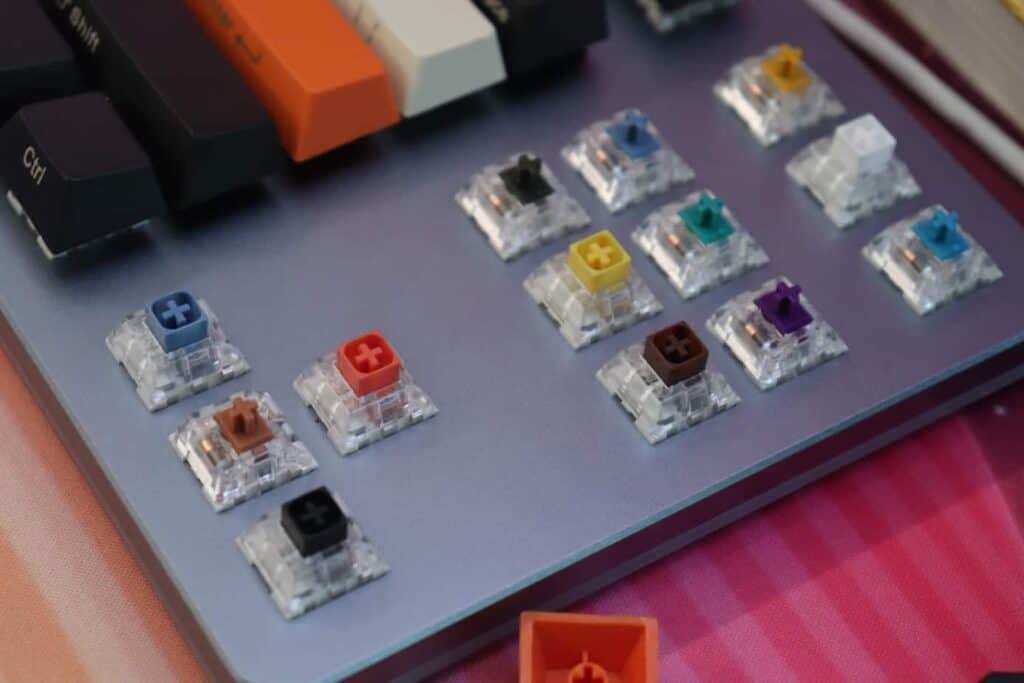
A mechanical keyboard lets you choose between different feel and sounds of your switches (the part under the keys that move up and down), such as loud and clicky, silent and bumpy, and smooth and quiet. These three types of switches are referred to as linear, clicky, and tactile.
Picking out the perfect switch can improve your typing accuracy and your overall wpm.
We have a full guide on our favorite switches for typing here.
Clicky Switches: Loud and Bumpy
A clicky switch gives you the ultimate feedback on all of the senses. Clicky switches have a pronounced bump on each keystroke and a loud clicking noise. This feedback will let you know a key has been entered so you can gracefully move onto the next key. Some, such as myself, cannot stand the sound of clicky switches, so they are not for everybody. The most popular clicky switch is the Cherry MX Blue.
Tactile Switches: Perfect for Typing
Tactile switches are perfect for typing in my experience. They have a nice bump on each keystroke and only produce a moderate amount of noise. You can look at different tactile switches to determine if you want a big bump or smaller bump depending on what feels better for you.
The most popular tactile switch is the Cherry MX Brown.
Linear Switches: Not the Best for Typing
Linear switches are little different, they have zero bump. Instead, linear switches are super smooth and consistent feeling. In addition, they are pretty quiet, so they are a great choice for someone who types late at night and doesn’t want to wake up the family.
The Cherry MX Red is quite popular.
Choose How Heavy Your Keys Feel
With a mechanical keyboard you can choose how heavy each individual switch feels. If you have small hands or a light keystroke, you can get a switch with a low resistance to accommodate.
If you type with lead fingers, a heavier switch would be a better option for you. We recommend a switch such as the Cherry MX Black or Cherry MX Clear for those who are heavy typists.
Choose Perfectly Shaped Keycaps
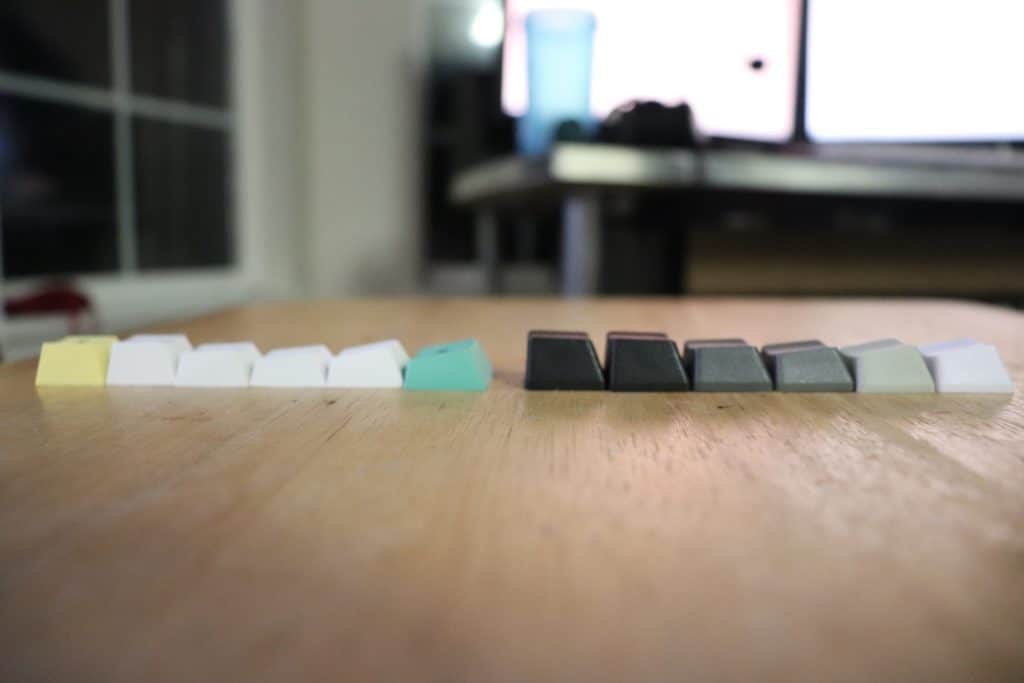
Another way to handcraft a mechanical keyboard to your typing needs is by choosing the ideal keycap shape, referred to as the profile.
Keycaps come in also sorts of profiles, some are shorter, some are taller, and others can be flatter. The typical keyboard comes in an OEM profile, but we typically recommend the Cherry profile for serious typists.
The Cherry profile is shorter and has more intense angle on each keycap, so you don’t need to reach as far when typing. Perfect for saving precious time to boost your wpm.
You read more in-depth about the difference between OEM and Cherry keycap profiles.
Picking the Right Keyboard Height
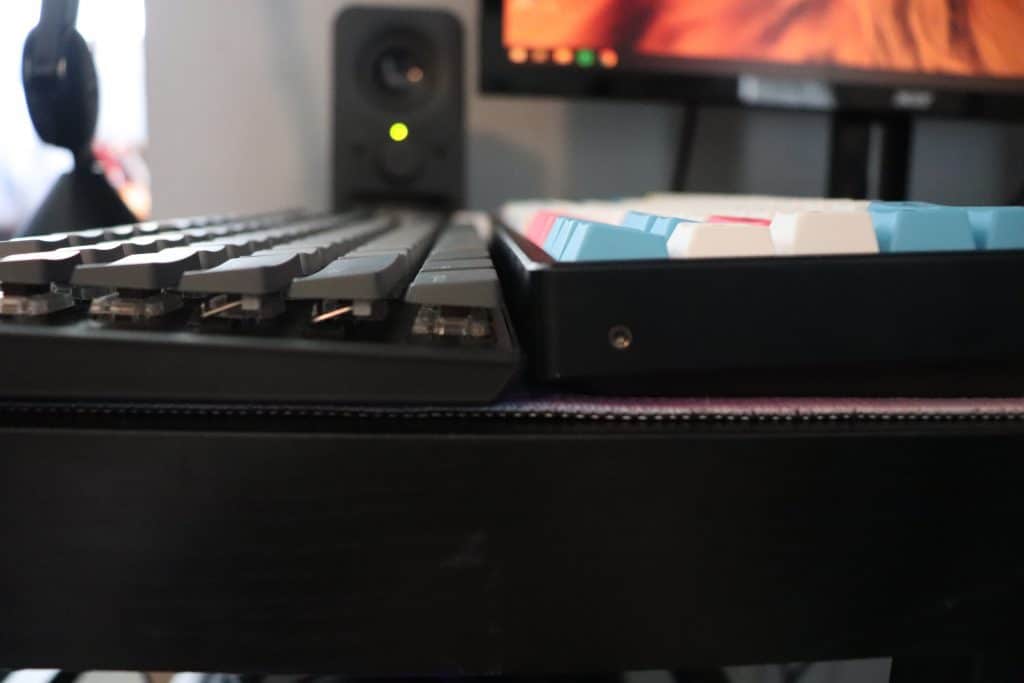
Mechanical keyboards come in all shapes and sizes. You can find different height keyboards to optimize your environment and put yourself in the right position to put out fast typing speeds.
There are two main mechanical keyboard types: standard and low-profile. The standard keyboards are slightly taller than a normal non-mechanical keyboard, but the heights range a lot between each keyboard.
Low-profile keyboards, however, are made to be super short. They can help reduce wrist pain for people who find it uncomfortable using a normal mechanical keyboard.
There are some drawbacks to a low-profile keyboard, as you won’t get the same typing experience with the shorter switches. We usually find standard mechanical keyboards to be the most enjoyable to type on.
Typing Faster Comes Down to Practice
While you can customize your mechanical keyboard to be perfect for your needs, typing faster all comes down to dedicated practice. When most people transition to a mechanical keyboard, they will find their typing speeds drop temporarily as they adjust to the new feel.
When you get a new keyboard, practice is the number one thing that will make you type faster, not some new keyboard with brand new switches, although they can help.
How to Type Faster: Explained
As we mentioned before, a mechanical keyboard is unfortunately not a magic bullet to boost your wpm, although it can really help in a round-a-bout sort of way. We’ll go over some tried and tested ways to help increase typing speed.
Improve your Posture
To use your hands and fingers quickly and properly, you must first establish a stable base. Make sure you are sitting in your chair and now slouched over or hanging off the edge.
The graphic below demonstrates ergonomic principles for sitting and doing deskwork such as typing.
Make sure your elbows are at 90 degrees and wrists are in neutral position, no bending up or down. The fingers are hovering above the keys and may be resting on the home row keys. You are ready to type, my friend.
Other things that people may not think about include having a wrist foam pad, making sure that it’s warm in the room/office so your joints aren’t stiff and frozen, and having an appropriately sized keyboard for your typing style.
Try Touch Typing to Increase Speed
We recommend touch typing as a way to increase typing speed. The basic principle is to feel your way around the keyboard instead of staring at it to enter each keystroke.
Start by positioning the hands on the home row, which is the middle row of the keyboard with the left hand on the letters ASDF and the right hand on the letters JKL: and the thumbs at the space bar.
By placing your fingers in this position, you can easily reach all of the nearby keys. Eventually, you’ll want to get to a point where you can type without looking at the keyboard and all of the keys will be committed to muscle memory.
Hand Size Can Affect Typing Speed
Typing is very similar to playing the piano. People of all hand sizes can play the piano well, but their techniques differ to adapt to their bodies.
Some things that can affect typing speed include the size of the keyboard, posture, the height of the chair and surface of the keyboard, and whether you remember the location of the keys or not.
Smaller-handed people will need to really stretch their fingers to reach the far away keys, while a person with big hands can do it more comfortably. On the hand, people with small hands tend to be more nimble and can dart around the keyboard quicker. There is definitely a tradeoff, but it really comes down to the individual.
Online Resources to Improve Typing Speed
- Typing Club – a free resource that has interactive videos and practice sessions. It starts from the very basics and progressively gets more difficult. Also allows you to take a placement test to skip things you might already be good at.
- EduTyping – an education-focused resource that you child might have access too and can practice at home.
Other Great Resources for Typing:
- Tipp10 is a free online resource for learning to touch type. It is available as a web app or as a downloadable software version as well.
- keybr is another free resource that allows you to practice touch typing that offers a cool on-screen visual of where the keys are, so you don’t have to look down so much.
- Typing.com has some free typing lessons, but it is limited. Not all their content is available without payment.
- Speed Typing Online has basic lessons as well, but practice gets boring as it is super repetitive
Conclusion
Mechanical keyboards are always an excellent upgrade from the normal membrane keyboard. They offer a much better typing experience, more accurate typing, and ultimate customization.
With a mechanical keyboard you can customize the switches, keycaps, and height to make yourself the most comfortable and efficient typist in the office.
While you may not see an immediate increase in typing speed when switching to mechanical, there are some other great ways to improve typing speed such as lots of practice, updating your typing technique, and adjusting your posture.
Happy Typing!
